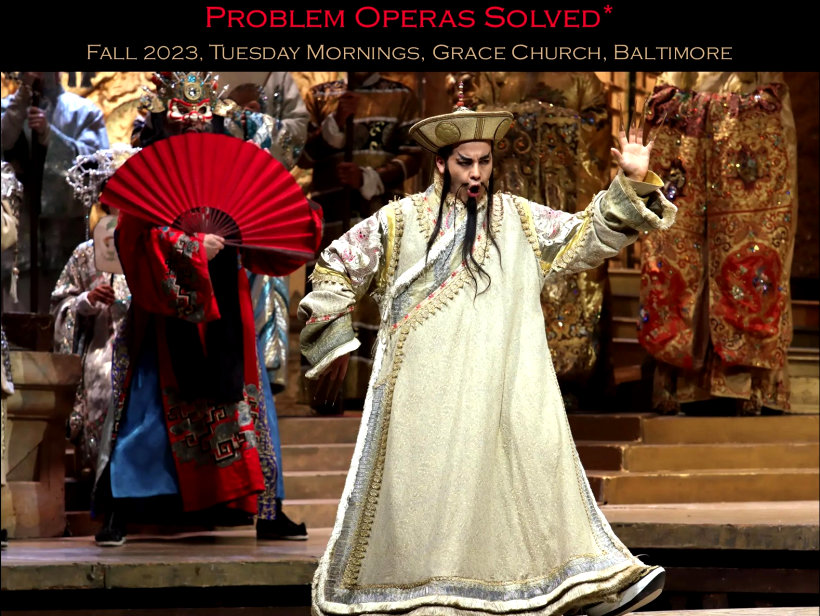| Handout (flat) Handout (folded) Class Script | Return to Index |
For a time at least, the complete Katie Mitchell production is up on YouTube, albeit with German titles. There are also
two different trailers and some compilations of the individal arias with no titles at all; from these, I have given links
to nine of the arias we actually heard in class; the only important things missing are the two dramatic ariosi sung
by Ruggiero as he discovers the truth.
If you are interested to see how the opera ends in the Mitchell production, I give a link cued to this scene in the complete video above. The trio between Alcina, Bradamante, and Ruggiero is interesting as being the only moment in the opera when the soloists sing together. Mitchell also has some quite original solutions to the dramatic problems posed by this scene.
The most famous aria in the opera is probably Morgana's "Tornami a vagheggiar." I left it out because I thought we already had enough scenes of simulated sex. But I include a link to it below, together with two others. One is a brilliant concert performance by Amanda Forsythe with the Cleveland group Apollo's Fire. The other is a video from this year's performance at Glyndebourne; for its combination of cheesy production and brilliant singing, it has to be seen to be believed!
| GENERAL OVERVIEW | |||
| Handel: Alcina |
Complete production
(Mitchell, Aix 2015; German titles) Trailer from the above Trailer (shorter, slightly different) |
||
| ARIAS HEARD IN CLASS | |||
| First hour |
Morgana
(Anna Prohaska) Alcina (Patricia Petitbon) Oberto (Elias Mädler) Ruggiero (Philippe Jaroussky) Bradamante (Katarina Bradic) |
||
| Second hour |
Oronte
(Anthony Gregory) Bradamante (Katarina Bradic) Ruggiero (Philippe Jaroussky) Alcina (Patricia Petitbon) |
||
| SECTIONS NOT HEARD IN CLASS | |||
| Ending of the opera | Trio and choruses (from the Aix production) | ||
| Morgana: "Tornami a vagheggiar" |
Aix production
(Anna Prohaska) Amanda Forsythe (with Apollo's Fire) Glyndebourne 2023 (Soraya Mafi, da capo section) |
||









